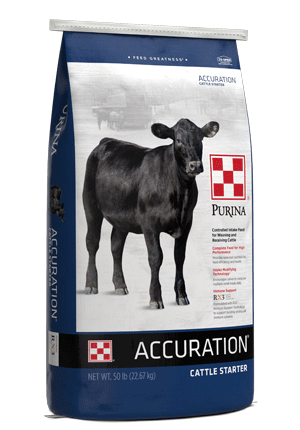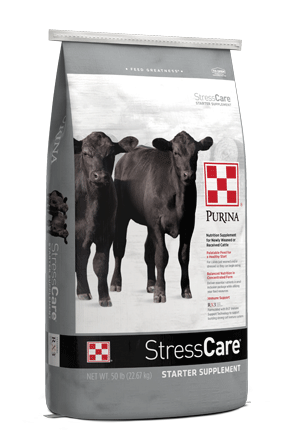
Boost Your Cattle Respiratory Vaccine Program
Management : Cow & Calf
Management : Weaned Calf

Help calves weather respiratory and clostridial disease challenges with 4 cattle vaccine tips.
Weaned calves encounter a new diet, new environment, new pen mates and weather fluctuations. And, they endure it all without a fully developed immune system.
It’s no wonder calves are more susceptible to illness at weaning. But, preventative strategies, like proper cattle respiratory vaccines, prepare a calf to better fight off disease challenges.
Consider these tips as you evaluate your cattle vaccination schedule:
A combination of an intranasal respiratory, a bacterial pneumonia and a 5-way viral cattle respiratory vaccine can help prevent common respiratory diseases like Bovine respiratory syncytial virus (BRSV), Parainfluenza 3 (PI-3), Infectious bovine rhinotracheitis (IBR) virus and more.
Clostridial diseases, although uncommon, come with a poor prognosis. Calves are often diagnosed with clostridial diseases after it’s too late for intervention. A 7-way clostridial cattle vaccine can help prevent costly diseases, like black leg, malignant edema, black disease and more.
Your veterinarian is your best partner in developing a comprehensive animal health protocol – make sure you’re having proactive discussions about vaccination programs.
At birth:
High-quality weaned calf rations, like the Purina® starter line with RX3® Immune Support Technology, support immune function to complement cattle respiratory vaccines.
Plan now to combat costly respiratory challenges with strong starter feeds.
Does your cattle nutrition program stack up? Find out with a Proof Pays trial.
Weaned calves encounter a new diet, new environment, new pen mates and weather fluctuations. And, they endure it all without a fully developed immune system.
It’s no wonder calves are more susceptible to illness at weaning. But, preventative strategies, like proper cattle respiratory vaccines, prepare a calf to better fight off disease challenges.
Consider these tips as you evaluate your cattle vaccination schedule:
1. Determine vaccines needed
Start by ensuring you are using the cattle vaccines necessary to protect your calves. Work with your veterinarian to determine the right animal health protocol for your calves.A combination of an intranasal respiratory, a bacterial pneumonia and a 5-way viral cattle respiratory vaccine can help prevent common respiratory diseases like Bovine respiratory syncytial virus (BRSV), Parainfluenza 3 (PI-3), Infectious bovine rhinotracheitis (IBR) virus and more.
Clostridial diseases, although uncommon, come with a poor prognosis. Calves are often diagnosed with clostridial diseases after it’s too late for intervention. A 7-way clostridial cattle vaccine can help prevent costly diseases, like black leg, malignant edema, black disease and more.
Your veterinarian is your best partner in developing a comprehensive animal health protocol – make sure you’re having proactive discussions about vaccination programs.
2. Strategize your cattle vaccination schedule
The timing strategy outlined here allows calves to respond to vaccinations while they’re on pasture, before weaning-time stress begins. Consider your specific herd dynamics and challenges before determining a cattle vaccination schedule.At birth:
- Intranasal cattle respiratory vaccine
- Oral scour vaccine for pathogens like rotavirus, coronavirus and E. coli
- Clostridial vaccine
- Ultimately, the best “vaccine” at birth is high-quality colostrum from the calf’s dam
- Intranasal cattle respiratory vaccine
- 7-way clostridial vaccine
- Bacterial pneumonia vaccine for Pasteurella and Mannhaemia Haemolytica /- BVD
- 7-way clostridial vaccine
- 5-way viral cattle respiratory vaccine
- Bacterial pneumonia vaccine for Pasteurella and Mannhaemia Haemolytica
3. Review cattle vaccine best practices
Human error is the most common cause of vaccine failure in non-stressed cattle. Take time to prepare and follow proper vaccine protocols.- Always read and follow label directions to ensure vaccines are administered at the recommended dose and route and in a site that minimizes carcass defects. Follow cattle vaccination schedule recommendations for proper intervals between vaccinations.
- If administering multiple vaccines, never mix two different products in one syringe.
- Clean and sanitize your equipment before each use. Water heated to 180 degrees Fahrenheit should be used to clean pistol grip syringes. After washing, ensure syringes are free from residual disinfectant that may inactivate vaccines, and replace your needles after 10 to 15 injections.
- Follow vaccine storage best practices by avoiding exposure to direct sunlight or freezing temperatures. Most cattle vaccines should be stored at 40 to 50 degrees Fahrenheit and should be kept in an insulated cooler during administration.
- Vaccines shouldn’t be saved. Purchase cattle vaccine quantities to use all at once.
- If using modified live vaccines, administer within one hour of opening the bottle.
4. Ensure proper nutrition
An overlooked aspect of a vaccination program is the calf’s ability to elicit an immune response. If a calf can’t elicit an immune response to the vaccination, it does no good. Calves equipped to elicit a proper immune response to a vaccination are protected against disease.High-quality weaned calf rations, like the Purina® starter line with RX3® Immune Support Technology, support immune function to complement cattle respiratory vaccines.
Plan now to combat costly respiratory challenges with strong starter feeds.
Does your cattle nutrition program stack up? Find out with a Proof Pays trial.


